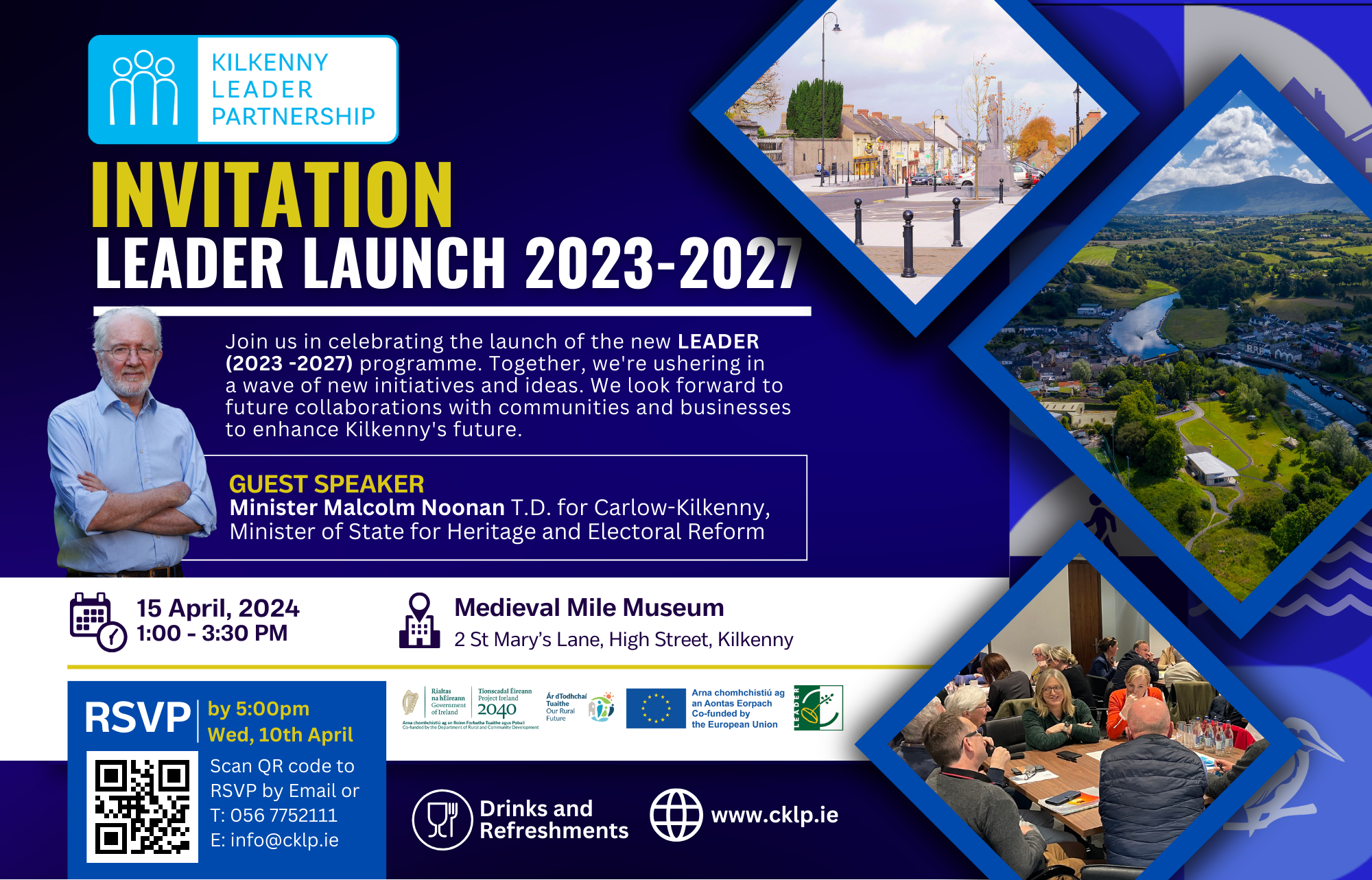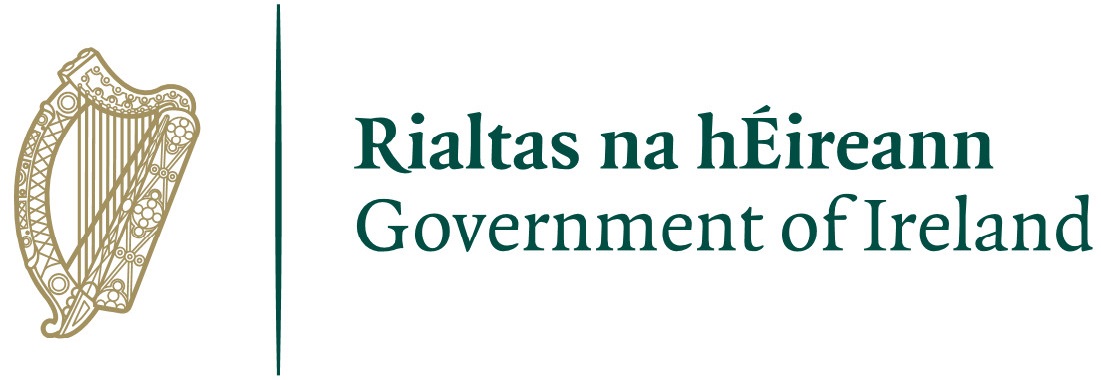Minister Phil Hogan launched two reports early this month that outline recommendations for developing the craft sector in Ireland.
The two reports were commissioned by Kilkenny LEADER Partnership; and South Tipperary Development Company – in association with the Crafts Council of Ireland and The West Cork Development Partnership on behalf of a consortium of Local Development Companies – Ballyhoura Development; Wexford Local Development.
Plans for the integration of a craft strategy into the Regional Development Plan strategies 2014 – 2020, and for the adoption of a number of recommendations from the reports, were announced by the Local Development Companies (LDC) in association with the Crafts Council of Ireland (CCoI). The partnership between LDC and CCoI provides a road map for investment and the the development of the crafts sector, which it is hoped will lead to growth and job creation in rural economies.
Minister Hogan said: “I am delighted that these agencies have collaborated on this important research project and are exploring the significant opportunities which the reports have highlighted for cooperation in the regional development of Ireland’s craft sector.These reports provide a comprehensive evidence base for future actions and investment in Ireland’s innovative craft sector.”
Kilkenny People Press Release
Two reports highlighting the need to develop the craft sector in Ireland was launched today by Minister for the Environment, Community and Local Government, Phil Hogan which he said already provides vital employment in local economies throughout the country and generates an output of almost half a billion euros.
Plans for the integration of a craft strategy into the Regional Development Plan strategies 2014 – 2020 and for the adoption of a number of recommendations from the reports were announced by the Local Development Companies (LDC) in association with the Crafts Council of Ireland (CCoI) in the National Craft Gallery, opposite Kilkenny Castle.
.The partnership between LDC and CCoI provides a road map for future investment and joint actions in the development of the crafts sector leading to growth and job creation in rural economies.
The two reports were commissioned by The West Cork Development Partnership on behalf of a consortium of Local Development Companies – Ballyhoura Development Ltd; Wexford Local Development; Kilkenny LEADER Partnership; and South Tipperary Development Company – in association with the Crafts Council of Ireland.
Minister Hogan said he was delighted the agencies had collaborated on an important research project and were exploring the significant opportunities which the reports had highlighted for cooperation in the regional development of Ireland’s craft sector. “While there are many craft enterprises of scale, the crafts sector in Ireland is primarily made up of micro-enterprises which form an important part of rural and local economies,” he said.
“By supporting and developing our indigenous craft industry, talented designers and makers throughout the country can play a vital role in contributing to sustainable economic renewal. These reports provide a comprehensive evidence base for future actions and investment in Ireland’s innovative craft sector,” he added.
In both reports, the participating regions are reflective of various stages of development of the craft sector throughout Ireland and provide a sound basis for the development of programmes and investment nationally.
‘Creative Clusters – An economic analysis of the current status and future clustering potential for the crafts industry in Ireland’ by Indecon International Economic Consultants examines the economic value of the craft sector. It outlines the sector’s contribution towards prosperous and sustainable rural economies through job creation, tourism and quality of life and highlights their potential to benefit from economies of scale through clusters. The report provides a series of recommendations that can be jointly undertaken by CCoI and the network of local development companies that have the potential to lead to significant growth.
‘Mapping the Craft Sectors in Southern Ireland’ by Willie Miller Urban Design (WMUD) examines the environmental, economic and infrastructural conditions that have led to the development of craft clusters in specific regions. It provides a model that underpins the rationale for LDC support for the crafts sector and other creative/cultural industries and surmises that the value of this group of industries lies not so much in the contribution of individual enterprises but in their collective effects.
The Crafts Council of Ireland , CEO, Karen Hennessy said the CCI was committed to developing active partnerships with Local Development Companies to maximise resources and extend combined reach in the development of the crafts industry in Ireland and internationally.
She noted that both reports are based on the current and future role of the LDC in the strategic growth of the crafts sector and therefore do not reflect the investment and supports provided by Enterprise Ireland, the County and City Enterprise Boards and other strategic partners. “I would like to acknowledge our many public and private partners in education, enterprise, tourism, culture, and at local and national level whose commitment, energy and on-going investment is vital in sustaining and developing Ireland’s craft sector,” she concluded.
“A vibrant partnership between the CCoI, the LEADER programme and many local stakeholders represents a strong platform for further collaboration in the development, provision and funding of a range of projects that can deliver upon the recommendations made in the reports,” added Ian Dempsey, Chief Executive Officer, West Cork Development Partnership.
CCoI and LDC intend to adopt selected recommendations from the reports as suitable and appropriate for integration into Regional Development Plan strategies 2014 – 2020. These include:
The development and delivery of a ‘Scalable Craft Enterprise’ programme with West Cork Development Partnership which aims to work with a number of craft enterprises to put appropriate mechanisms in place to achieve scalability and to develop a model that can be rolled out to other regions
Enhancement of the cluster capability in the craft sector through the development of networks and facilities and through the promotion of inter-sectoral development between craft, tourism, food and complimentary sectors.
Many craft enterprises already receive funding from Local Development Companies to attend key events during the year, including the annual trade show Showcase – Ireland’s Creative Expo which returns to the RDS on 19th January 2014, attracting buyers from 26 countries around the world.
About the reports:
‘Creative Clusters – An economic analysis of the current status and future clustering potential for the crafts industry in Ireland’ by Indecon International Economic Consultants examines the economic value of the craft sector. It outlines the sector’s contribution towards prosperous and sustainable rural economies through job creation, tourism and quality of life. It highlights their potential to benefit from economies of scale through clusters that enable sharing of resources in terms of infrastructure, research and development, virtual and professional, networks, training, and skills sharing. Following an analysis of opportunities and challenges for the sector, the report provides a series of recommendations that can be jointly undertaken by CCoI and the network of local development companies that have the potential to lead to significant growth.
‘Mapping the Craft Sectors in Southern Ireland’ by Willie Miller Urban Design (WMUD) examines the environmental, economic and infrastructural conditions that have led to the development of craft clusters in specific regions. It highlights the importance and legacy of significant interventions at periods of time in our history, such as establishing Kilkenny Design Workshops in the 1960s, as well as examining how place, culture and environmental factors can lead to the development of strong craft and cultural communities in regions such as West Cork.
The report provides a model that underpins the rationale for LDC support for the crafts sector and other creative/cultural industries. It surmises that the value of this group of industries lies not so much in the contribution of individual enterprises but in their collective effects. They complement, reinforce and amplify each other, and provide powerful narratives for place marketing and tourism promotion





![23-27 LEADER Programme Logos-2040 logo Text PNG[29] 23-27 LEADER Programme](http://cklp.ie/wp-content/uploads/23-27-LEADER-Programme-Logos-2040-logo-Text-PNG29.png)




